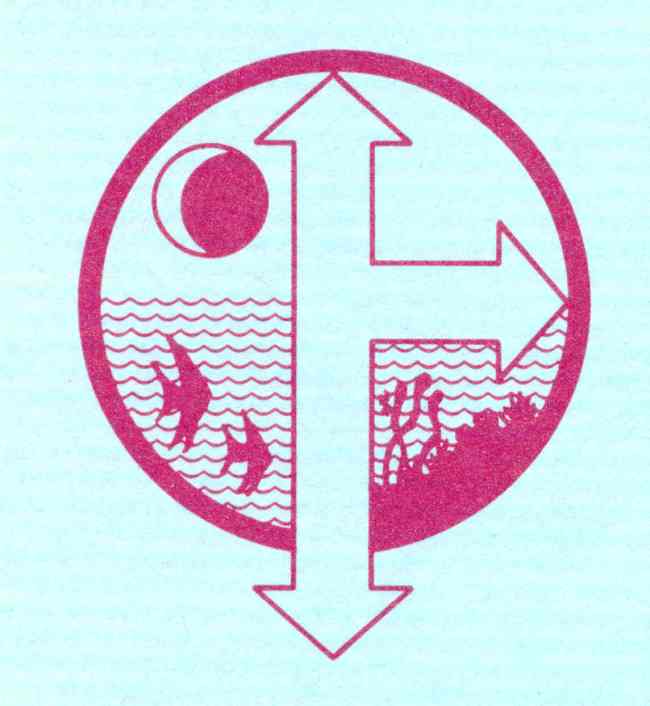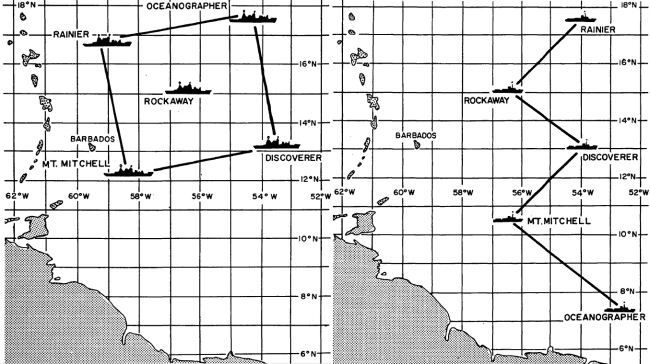BOMEX logo
On May 1, 1969, the Barbados Oceanographic and Meteorological EXperiment (BOMEX) was launched. The three month-long experiment was carried out in and around the West Indian island of Barbados. Seven U.S. Government agencies cooperated in gathering weather and ocean data in an effort to measure the exchange rate of heat, moisture, and momentum across the sea surface in the deep Tropics.
BOMEX ship arrays
The information was gathered from a variety of platforms across the island, from ships at sea, and from scientific aircraft flying above. Most notable was the use of FLIP (Floating Laboratory Instrument Platform) to take measurements across the air-sea boundary. The experiment area covered 500 square kilometers with an array of five oceanographic survey ships in two different configurations. One was a box to windward of the island that examined the flow of the winds and currents. The second formation was a zig-zag array used to examine African easterly waves, disturbances which could form into tropical cyclones.
BOMEX headquarters
BOMEX was a follow-up of the Line Island experiments in 1967 and a 1968 Florida State University examination of the Trade Winds carried out in Barbados. It led in 1974 to GATE (GARP Atlantic Tropical Experiment) , a massive, multinational experiment that examined the tropical ocean/weather interactions in the eastern Atlantic off the African coast.
HRD and AOC papers that resulted from BOMEX:
Carlson, Toby N., Joseph M. Prospero, 1972: The Large-Scale Movement of Saharan Air Outbreaks over the Northern Equatorial Atlantic. J. Appl. Meteor., 11, 283–297.
Friedman, Howard A., Gerald Conrad, James D. McFadden, 1970: ESSA Research Flight Facility Aircraft Participation in the Barbados Oceanographic and Meteorological Experiment. Bull. Amer. Meteor. Soc., 51, 822–834.
Friedman, H. A., J. D. Michie, and J. D. McFadden, 1970: The NOAA Research Flight Facility’s Airborne Data Collection Program in Support of the Barbados Oceanographic and Meteorological Experiment. NOAA Tech. Report ERL 198-RFF 4, October, 178 pp.


